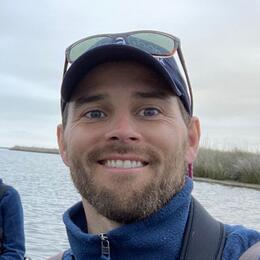Two new resilience projects by Audubon and our partners will test methods for protecting threatened bird habitat on the Cape Fear River.
- On Shellbed Island, a living shoreline made out of biodegradable hard-scape will be installed to prevent low-lying shell rakes from washing away. Shell rakes are elevated banks of old oyster shells, and they provide critical nesting habitat for birds like American Oystercatchers. The living shoreline will serve as a backstop and buffer, allowing loose shell to move but preventing it from scattering so widely that the rakes lose their function as nesting habitat.
- On Battery Island, another living shoreline—this one a 70-foot test reef—will be used to protect the shoreline from waves and erosion, while allowing sediment to accumulate behind it. Battery Island is home up to 10,000 nesting White Ibis every year, among other species.
The goal is to try new, environmentally friendly approaches for protecting low-lying islands on the river, which provide nesting grounds for thousands of waterbirds, including ibis, pelicans and terns. To that end, we partnered with a local North Carolina-based company, Sandbar Oyster Company, to design living shorelines especially suited to these sites.
“The same problems we have on the river are issues that oystercatchers and other waterbirds face up and down the Atlantic Coast,” said Lindsay Addison, coastal biologist at Audubon North Carolina. “If these low cost, low profile resilience methods are effective, it would give biologists another tool to protect these species across their range.”
Erosion on the river is driven by rising seas, higher king tides, and wakes from large vessels. Due to historic declines in oyster abundance on the river, shell rakes also suffer from fewer oyster shells available to accumulate into shell rakes. “Shell rakes are these niche habitat features found from Florida into the Mid-Atlantic wherever there is—or was—a source of shell,” Addison said. “For example, on the Cape Fear River, about half of the 100 oystercatcher pairs nesting there are on rakes.”
Without natural oyster beds to replenish eroding rakes, the habitat is worn away with time. The backstops should help keep the rakes from washing away, while other restoration projects are focused on recruiting more living oysters into the river.
The North Carolina Coastal Federation is contributing $13,800 in cost share to the total $51,500 budget for the projects. Audubon and our partners are looking to fundraise the remainder. Donations to the project can be made by contacting lindsay.addison@audubon.org.
The living shorelines are part of a broader effort by Audubon to bolster the resilience of nesting islands on the Cape Fear River. In recent years, we have restored oyster reefs and launched a state-supported assessment to figure out the best ways to protect and build back Battery Island.
Audubon staff manage the nesting sanctuaries and work with partners to conduct research on the birds.





